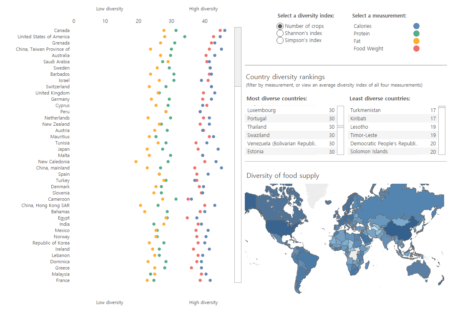Speaking of nifty websites, I’ve just come across resourcetrade.earth, from Chatham House, which enables
…users to explore the fast-evolving dynamics of international trade in natural resources, the sustainability implications of such trade, and the related interdependencies that emerge between importing and exporting countries and regions.
That of course includes agricultural trade, with the data coming mainly from FAO and USDA. Which means you can do interesting mash-ups with the global diets data we blogged about a couple of days back.
 For example, here on the left are the data on the contribution of pulses to total food weight in the Indian diet, courtesy of that fabulous CIAT website. Note the steady increase in pea consumption over the past 30 years or so (click on the image to make it bigger, it’s the plot in the bottom right hand corner).
For example, here on the left are the data on the contribution of pulses to total food weight in the Indian diet, courtesy of that fabulous CIAT website. Note the steady increase in pea consumption over the past 30 years or so (click on the image to make it bigger, it’s the plot in the bottom right hand corner).
A lot of those peas, it turns out, now come from abroad, Canada mostly (as you can see on the map below). It’s a $500 million market, up from $30 million in 2000.
Now, I don’t know what proportion of Indian pea consumption is down to Canadian imports, but it should be possible to figure it out. I’m betting a fair bit of the aloo mutter you have in Amritsar is made in Canada.
